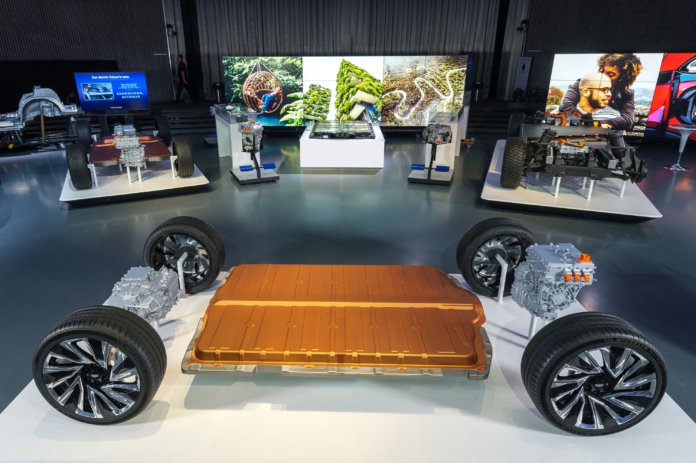General Motors Co. has shared details of its strategy to grow the company’s electric vehicle (EV) sales.
GM’s strategy is a modular propulsion system and flexible, third-generation global EV platform powered by proprietary Ultium batteries. They will allow the company to attend to a variety of customer needs – whether they are looking for affordable transportation, a luxury experience, work trucks or a high-performance machine.
“Our team accepted the challenge to transform product development at GM and position our company for an all-electric future,” says Mary Barra, chairman and CEO at GM.
“What we have done is build a multi-brand, multi-segment EV strategy with economies of scale that rival our full-size truck business with much less complexity and even more flexibility,” she adds.
GM’s new Ultium batteries are large-format, pouch-style cells that can be stacked vertically or horizontally inside the battery pack. This allows engineers to optimize battery energy storage and layout for each vehicle design. Ultium energy options range from 50 to 200 kWh, which could enable a GM-estimated range up to 400 miles or more on a full charge, with zero to 60 mph acceleration in as low as three seconds. Motors designed in-house will support front-wheel drive, rear-wheel drive, all-wheel drive and performance all-wheel drive applications.
Ultium-powered EVs are designed for Level 2 and DC fast-charging. Most will have 400 V battery packs and up to 200 kW fast-charging capability, while the truck platform will have 800 V battery packs and 350 kW fast-charging capability.
Photo: General Motors reveals its all-new modular platform and battery system, Ultium






I don’t think these coal burners will catch on. People can’t be that stupid. The energy (electric) comes from coal and fossil fuel generators the pollution is released at the plant not at the vehicle. This is called Non Point Pollution.